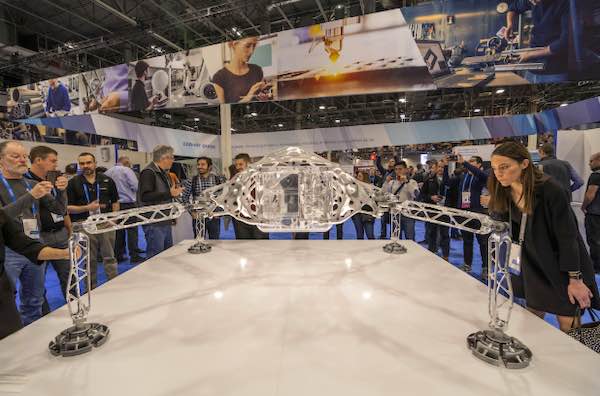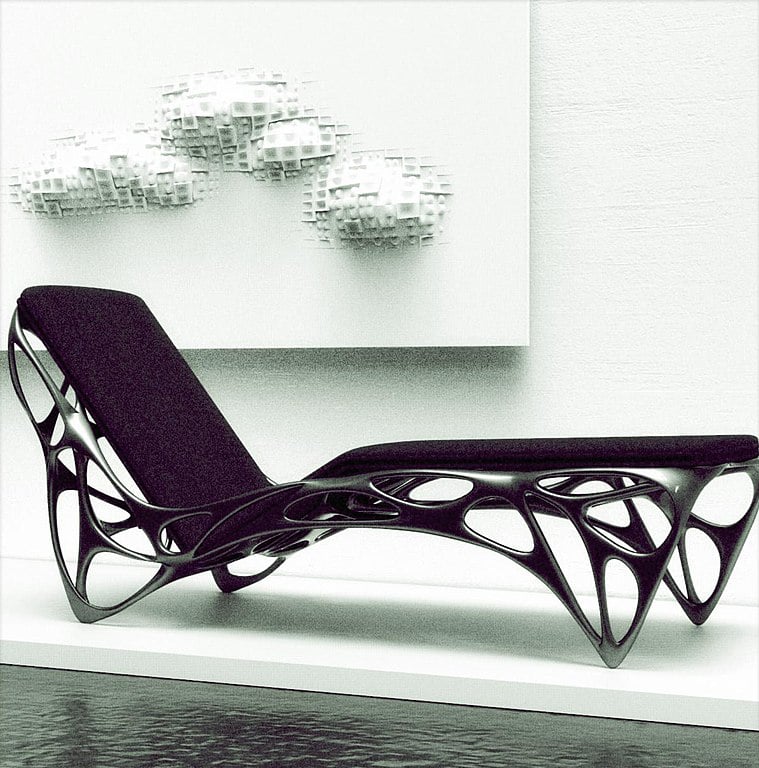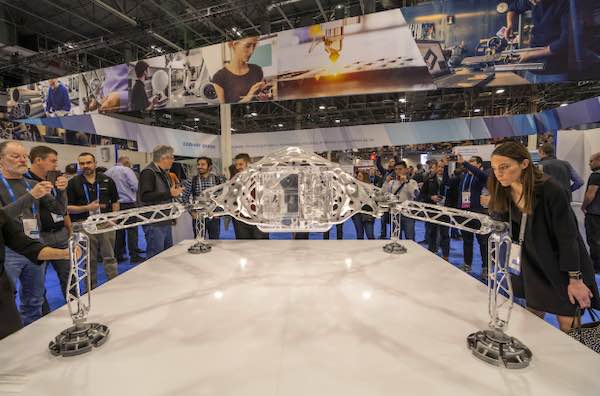What is Generative Design?
Like additive manufacturing (AM), generative design (GD) is a branch of 3D printing.
Unlike AM, however, wherein the whole 3D printing process follows the operator’s specific set of instructions, GD is an iterative design process: it involves the user (e.g. electrical engineer, design engineer, etc.) inputting their design preferences and having cloud-based software—the paragon of which is Autodesk’s Fusion 360 platform—generate multiple on-screen design options itself, prior to the 3D printing process. (Naturally, this also facilitates easy use of rapid prototyping.)
With the right criteria (such as the product’s ideal size, weight, materials, its position of connection points, etc.) and programming, the given software generates a myriad (often thousands) of potential designs.
This is all before displaying them on a PC for the engineer to filter through based on preference: it is ultimately his or her job to cherry-pick (or digitally tweak) what the finished target product, e.g. chair, should look like, and the 3D printer is then left to manufacture it accordingly.
An Alternative to Traditional Designing Methods
Many are calling generative design a breakthrough from the traditional, less-automated, AM-based design methodology. This is especially as GD systematically limits how much material is used in the production process—a feat that is much harder for human hands.
Despite its current infancy, GD has already brought great strides in what is perhaps one of its most fitting areas: art, particularly given the striking and unusual designs that it achieves. But that’s just one testament to its limitless creative potential, which now leads us to the question of how—and how much—generative design has the potential to transform both electrical/design engineering, and, of course, manufacturing at large.

Following NASA and Autodesk's partnership to build aerospace equipment with generative design, their interplanetary lander sits showcased at an exhibition. Image Credit: Autodesk.
A Breakthrough in 3D Printing?
As is the case with a lot of cutting-edge AI-based software, the growing interest in generative design naturally raises the question of whether algorithmic design calculations could pose any competition to the skills and creativity of designers and/or engineers. In fact, today’s early stages in generative design mean that it is now a good time to question whether or not you fully agree with some people’s affection for GD-based designs.
Either way, it currently seems that comparing the design iterations of GD software with that of a human is like comparing apples and oranges. Consider the above photograph of NASA’s interplanetary lander, whose generative design makeup shows the ‘alien’ nature of GD products: perhaps surprisingly to some, a design by AI is evidently a lot more ‘out there’ than traditional fabrication by a person.
This is as designers require (and, of course, want) simplicity in their designs, whereas automated systems need only to meet criteria, no matter how strange the end product may look as a result. In other words, generative design systems make no cosmetic considerations: they simply run the necessary calculations to manufacture a finished product that is as efficient, economical, and lightweight as possible.
Love It or Hate It
Regardless of whether you find the weird and wonderful creations of GD attractive or unsightly, the technology’s success in economically manufacturing products has understandably led to plenty of people celebrating its potential (although warnings about the disruptive changes that come with automating design are also persistent, of course).
All in all, the strange aesthetics of generative design, plus the changes that it is set to bring to design engineering, naturally make it a ‘love it or hate it’ technology. But the fact is, it is a speedy and economic solution, whose ultramodern style, user-friendliness and overall efficiency are ideal for many industries. Alongside electrical and design engineering, consider the below fields that will continue to benefit from generative design systems:

An example of the artistic potential of generative design: a sunbed produced through the use of generative design. Image Credit: Emmanuel Touraine.
How Generative Design Enhances Manufacturing and Engineering
As touched on, a key benefit of GD is its ability to plan and fabricate products using no more and no less than the exact amount of material required. This facilitates products that are significantly more lightweight than their traditionally-designed counterparts.
Accordingly, vehicle electrification especially is enjoying the benefits of this. This is for some of the same reasons that NASA has opted for generative design: aside from reducing fuel consumption, it makes the overall manufacturing process more intuitive.
Siemens’ digitalisation project—Siemens Digital Industries Software—for instance, released a whitepaper last year that emphasises the advantages of generative design in the EV production process:
“[almost all] companies lack industry-specific experience and the engineering resources to [overcome] the complexities of electric vehicle design. Even the major automotive OEMs will face problems that their legacy design flows are ill-equipped to handle.
“The electrical and electronic systems will need to be optimised for cost, weight and power consumption. . . . These companies will need a new design methodology. . . . They will need generative design.”
Meeting the Demands of Electronic Design
Indeed, the intricacies of automotive design have always been challenging, but the industry’s increased focus on electrification is making it more complicated still (consider, for instance, modern automotive’s rise in ADAS technologies and the need for increasing smart sensors, actuators, and so on).
The requirement to secure such components must also be met—and balanced—with such demands as power consumption, weight limitations, and vehicle space constraints.
To combat this, electrical engineers, or EEs, will benefit from generative design thanks to its ability to—not only provide easily testable design prototypes—but also offer a more foolproof process in general.
By automating their design methodology, EEs will enjoy the ability to no longer need to work with numerous components: in a process known as part consolidation, the given GD software will even be able to offer complete components from the get-go.

A three-dimensional rendering or model of a sports car.
The Verdict on Generative Design
All in all, the lightweight, eco-friendly, and intuitive advantages of generative design certainly suggest that it has earned its title as ‘the future of design’. And while it may never be able to fully overshadow (only assist) the creative flair of a human designer, its bizarre yet practical creations are nevertheless something to behold.
After all, you can’t spell ‘weird and wonderful’—without ‘wonderful’.






